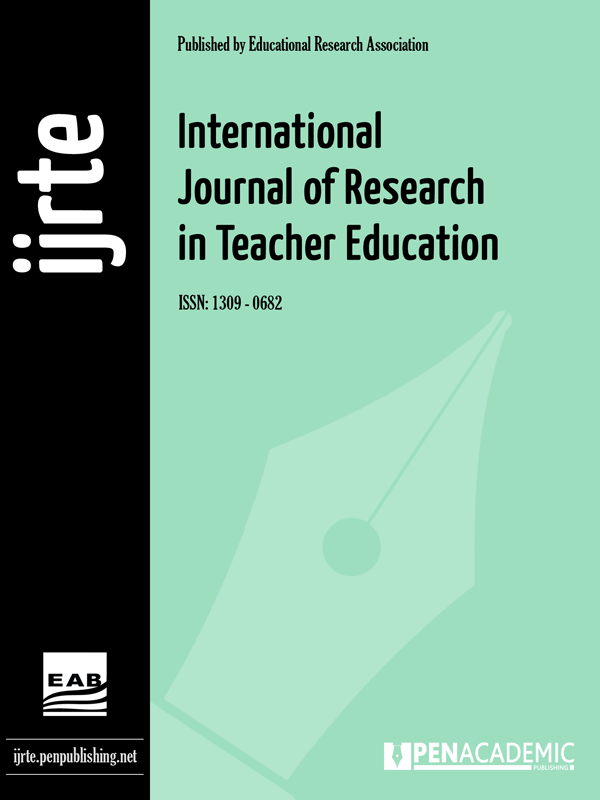Research article | Open Access
International Journal of Research in Teacher Education 2025, Vol. 16(2) 48-65
The Effect of RCA Software on Psychomotor Education of Children Diagnosed with Autism Spectrum Disorder
pp. 48 - 65 | DOI: https://doi.org/ijrte.2025.1323.04
Publish Date: June 30, 2025 | Single/Total View: 254/226 | Single/Total Download: 302/254
Abstract
Autism Spectrum Disorder (ASD) is a neurodevelopmental condition that emerges in the early years of life and is characterized by deficits in social communication and interaction, verbal and non-verbal communication difficulties, and restricted, repetitive patterns of behavior. Due to these differences, various developmental skill areas are adversely affected in individuals with ASD. The aim of this study is to examine the effectiveness of the exercises included in the RCA Software in enhancing the psychomotor skills of children with autism in a more effective, enjoyable, and rapid manner, and to observe the impact of these exercises on other developmental domains. Within the scope of the study, exercises focused on muscle tone, coordination, rhythm, breathing, and impulse control have been implemented, and both the relevance of these exercises to their intended purposes and their effectiveness in supporting other developmental areas have been evaluated. The study involved two children, aged seven and eight, diagnosed with moderate ASD. As a result of the intervention, meaningful improvements have been observed in several developmental areas. In both children, the most notable improvement has been seen in the area of fine motor skills, while the least progress has been observed in speech comprehension and independent living skills. Additionally, varying degrees of improvement have been recorded in gross motor skills, speech, social behaviors, and perception.
Keywords: Autism Spectrum Disorder, RCA Software, psychomotor, development
APA 7th edition
EYNALLI, I.S., & Akgun, N.R. (2025). The Effect of RCA Software on Psychomotor Education of Children Diagnosed with Autism Spectrum Disorder. International Journal of Research in Teacher Education, 16(2), 48-65. https://doi.org/ijrte.2025.1323.04
Harvard
EYNALLI, I. and Akgun, N. (2025). The Effect of RCA Software on Psychomotor Education of Children Diagnosed with Autism Spectrum Disorder. International Journal of Research in Teacher Education, 16(2), pp. 48-65.
Chicago 16th edition
EYNALLI, Irem Seda and Nergis Ramo Akgun (2025). "The Effect of RCA Software on Psychomotor Education of Children Diagnosed with Autism Spectrum Disorder". International Journal of Research in Teacher Education 16 (2):48-65. https://doi.org/ijrte.2025.1323.04
Amerikan Psikiyatri Birliği. (2014). Ruhsal bozuklukların tanısal ve sayımsal el kitabı: DSM-5 tanı ölçütleri el kitabı (E. Köroğlu, Çev.). Hekimler Yayın Birliği.
Baltacı, A. (2019). Nitel araştırma süreci: Nitel bir araştırma nasıl yapılır? Ahi Evran Üniversitesi Sosyal Bilimler Dergisi, 5(2), 368–388. https://doi.org/10.31592/aeusbed.598299
Başkale, H. (2016). Nitel araştırmalarda geçerlik, güvenirlik ve örneklem büyüklüğünün belirlenmesi. Dokuz Eylül Üniversitesi Hemşirelik Fakültesi Elektronik Dergisi, 9(1), 23–28.
Berkeley, S. L., Zittel, L. L., Pitney, L. V., & Nichols, S. E. (2001). Locomotor and object control skills of children diagnosed with autism. Adapted Physical Activity Quarterly, 18(4), 405–416.
Büyüköztürk, Ş., Akgün, Ö. E., Karadeniz, Ş., Demirel, F., & Kılıç, E. (2013). Bilimsel araştırma yöntemleri (17. bs.). Pegem Akademi.
Creswell, J. W. (2003). Research design: Qualitative, quantitative, and mixed methods approaches (2nd ed.). Sage Publications.
Çelik, O. T., & Buğday, B. (2022). Otizmli çocuklarda fiziksel aktivite. Anatolian Journal of Health Research, 3(1), 30–32. https://doi.org/10.29228/anatolijhr.55619
Dönmez, M. U. (2019). Otizmli bireylerde fiziksel aktivite uygulamalarının bazı fizyolojik ve psikolojik parametreleri üzerine etkisi: Alanyazın derlemesi. Academic Studies on Natural and Health Sciences, 4(1), 607–615.
Elena, S., Georgeta, N., Cecila, G., & Lupu, E. (2014). Perceptual-motor development of children in elementary school. Procedia - Social and Behavioral Sciences, 114, 632–636. https://doi.org/10.1016/j.sbspro.2013.12.759
Goodway, J. D., Ozmun, J. C., & Gallahue, D. L. (2019). Understanding motor development: Infants, children, adolescents, adults (8th ed.). Jones & Bartlett Learning.
Guba, E. G., & Lincoln, Y. S. (1994). Competing paradigms in qualitative research. In N. K. Denzin & Y. S. Lincoln (Eds.), Handbook of qualitative research (pp. 105–117). Sage Publications.
Holloway, I., & Wheeler, S. (1996). Qualitative research for nurses. Blackwell Science.
Kavlak, B. (2019). Otizmli çocuklara uygulanan düzenli fiziksel aktivite programının bazı motorik özelliklere etkisi [Yüksek lisans tezi, Kocaeli Üniversitesi Sağlık Bilimleri Enstitüsü].
Newell, K. M. (2020). What are fundamental motor skills and what is fundamental about them? Journal of Motor Learning and Development, 8(2), 280–314.
Özdemir, M. (2010). Nitel veri analizi: Sosyal bilimlerde yöntembilim sorunsalı üzerine bir çalışma. Eskişehir Osmangazi Üniversitesi Sosyal Bilimler Dergisi, 11(1), 323–343.
Savahil, Ö. (2016). 5–10 yaş arası otizmli çocuklarda ince motor becerilerinin reaksiyon zamanı ve hareket hızına etkisinin incelenmesi [Yüksek lisans tezi, İstanbul Gelişim Üniversitesi Sağlık Bilimleri Enstitüsü].
Şimşek, A. (Ed.). (t.y.). Sosyal bilimlerde araştırma yöntemleri. Anadolu Üniversitesi Açıköğretim Fakültesi Yayını. ss. 162–183.
Vilensky, J. A., Damasio, A. R., & Maurer, R. G. (1981). Gait disturbances in patients with autistic behavior: A preliminary study. Archives of Neurology, 38(10), 646–649.
Yanardağ, M., & Huri, M. (2021). Otizm spektrum bozukluğunda duyu-algı-motor sorunlar ve müdahale süreci. Sakarya Üniversitesi Yayınları.
Yıldırım, A., & Şimşek, H. (2003). Sosyal bilimlerde nitel araştırma yöntemleri (3. bs.). Seçkin Yayıncılık.
Zachor, D. A., Ilanit, T., & Itzchak, E. B. (2010). Autism severity and motor abilities correlates of imitation situations in children with autism spectrum disorders. Research in Autism Spectrum Disorders, 4(3), 438–443.
